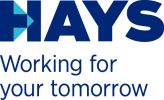Self-sourcing of external talent – is this the new holy grail?
Globalization, diversity, desired flexibility (on the part of both organizations and candidates) and – above all – shortages. A well-known list of reasons for organizations to do everything in their power to find new talent. And that world of attracting talent, whether permanent, temporary or very incidental, is getting bigger and more complex.
The real workforce of organizations
NextConomy brought a group of 25 ‘contingent labor managers’ together, who work mainly for the Procurement or HR departments of international companies, for one of the NextConomy Meetup sessions, which are gradually becoming well-known. This one was once again in collaboration with ClubVMSA. During an intensive ‘brown paper’ session, the participants quickly draw a true landscape with all those new forms of ‘sourcing’. These range from permanent staff and temporary contracts to conventional forms such as temporary agency work, project sourcing and freelancers. However, Statement of Work, the Human Cloud and even robots are becoming increasingly well-established as concepts for getting work done. The question as to whether variants of ‘business process outsourcing’, which is the outsourcing of certain components of the business process such as, for example, RPO should not also be included in this list of ways of organizing work, was responded to with a lively discussion among those present.
This animated ‘brown paper’ dialogue resulted in a spontaneous classification of the contract forms actually used by these organizations and a picture of what their workforce actually looks like. This model is also described as ‘the extended enterprise’: organizations are increasingly adding more non-traditional contract forms to their existing payrolls. Which makes the next exercise to determine the exact definitions of each of these terms. We’ll make a start.
Eight ways of getting work done. All eight are already being used in a few of the organizations. In the others, six to eight of them at least. The conclusion being that the fewer of these that you use, the greater the distance to the core of your organization and therefore the less clear it is whether this is a part of your talent acquisition program.
What’s in a name? Definitions as a condition of success
A few of the experts present indicated that it is a substantial challenge to make sure that everyone in and around the organization interprets these definitions in the same way. Does everyone in the organizations (business, procurement, HR) mean the same thing with these terms? Do clients and suppliers speak the same language? For example, does the social inspector also regard the freelancer you hired as a freelancer? It’s a theme which is becoming topical in more and more countries. In the UK, we have the new IR35 legislation, Germany has introduced new, stricter rules pertaining to collaboration with freelancers, ‘new’ legislation dating from 2016 is already being replaced by new rules in the Netherlands and California has its AB5 law, for the curtailment of the gig economy. Ireland will follow next year. Try coping with all this, if you are a ‘global contingent workforce manager’ and therefore responsible for worldwide hiring of external workers. Adhering to legislation and regulations governing the hiring of external workers (compliance) is and remains for many managers hiring priority number 1.
How do you bind all the talent in your organization together?
Once we have defined the various categories, the next step is to look at how to connect those categories. Where do you start and which of the categories fall within the ‘talent acquisition’ program? In other words, how do organizations feel about taking a more holistic approach to all the talents that can work for their organizations?
Two methods emerged from the dialogue conducted by those present. One is the integration of ‘permanent and flex’, centering on the ‘person’. You search for and select ‘someone’. The contract, whether permanent or flexible, is generally based on ‘hours in exchange for money’. Someone performs certain services for an agreed number of hours and is paid per hour, day or month, as opposed to it being calculated on the basis of a service or product supplied, as in such categories as Statement of Work.
Another method is to integrate starting with everything which is not ‘permanent’. The control over the various flexible forms of contract and other kinds of organization of work is combined in one whole to produce an extremely differentiated flexible shell.
Well-known discussions
By starting the integration of the various forms of organizing work (not everything at once, please – ‘You can’t conquer the world in a single day’ was the advice of one of the more experienced people present), three well-known discussions in the world of talent acquisition also immediately started:
- HR or procurement?
- Towards a single technology support system?
- Do it yourself or contract it out?
We have already written extensively about HR or Procurement here on NextConomy. It remains clear that a good program consists of a mixture of both disciplines, with the message to HR in particular being that they need to expand their interest in ‘external talent’ if they want to remain strategically relevant for the organization.
An integrated talent acquisition program benefits from a single candidate-monitoring system which contains all forms of contract. So an ATS + VMS, preferably linked to the new freelancer platforms which are springing up. Whether this dream will become technology reality is anybody’s guess.
And what about ‘do it yourself or contract it out’? Each of the categories mentioned demands its own sourcing approach. With every approach, you can ask yourself whether it’s wise to do this yourself or have an external party, specialized in such matters, do it.
The new grail: self-sourcing
Personally searching for, finding, selecting and contracting external talent, also know as ‘self-sourcing’, is certainly an item on the agenda of the organizations present at this NextConomy Meetup. Traditionally, the organizations work with intermediaries or brokering agencies which take over the recruitment and selection side of things. There are certainly enough reasons for doing more (personally) in this area. Fewer expenses through the lack of margins to the agencies. Being able to make better use of your ’employer’s brand’. Freelancers also want the lines between themselves and the managers who hire them to be as short as possible. Free access to the complete pool of talents rather than just a small, preselected group. However, the list of drawbacks is just as long. Making a ‘freelance value proposition’ is no easy task. Personally recruiting is a specialism and costs time, and therefore also money. Have you got a picture of the whole market? And what about legislation? Contracting through agencies covers some of the potential risks.
An exercise for every organization
This NextConomy Meetup provided a nice overview of and insight into various forms of external work, including their definitions and the major decisions to be made. An exercise which can also be performed by organizations wanting to make a real effort with a program centering on the ‘external workforce’. It does help in gaining insight into the size and complexity of how an organization really looks. And in knowing where to start, without going at everything all at once. And the tip of the day: “You can’t conquer the world in a single day”.
Johnson & Johnson. Always searching for the top talent, worldwide. Also one of the most interesting employers in Belgium. But even there, top talent doesn’t just walk through the door. So Johnson & Johnson is also deploying many sourcing strategies within what is already a mature and very advanced ‘hiring program’. Host Ann Snoeys, Category Manager HR Services kicked off by setting out the main features of that program and revealed a little about the challenges that J&J also faces.
J&J has a ‘one-stop shop’ principle for all questions regarding external work. One point of contact for all your questions. From there, strategic partnerships are maintained with agencies, often with worldwide operations, which find and select the talent.
There are still enough challenges though. Legislation governing external work, particularly in the case of freelancers or platforms, is becoming increasingly complex. Rates fluctuate wildly and freelancers too are becoming scarce. Within Johnson & Johnson, there is much interest in new channels such as platforms and the ‘Human Cloud’. But here too, there are legal issues affecting ‘intellectual property’, safety and labor law themes. Fodder for a subsequent NextConomy Meetup?
Our thanks to J&J for their hospitality and for making this NextConomy and ClubVMSA Meetup session possible.




















You must be logged in to post a comment.